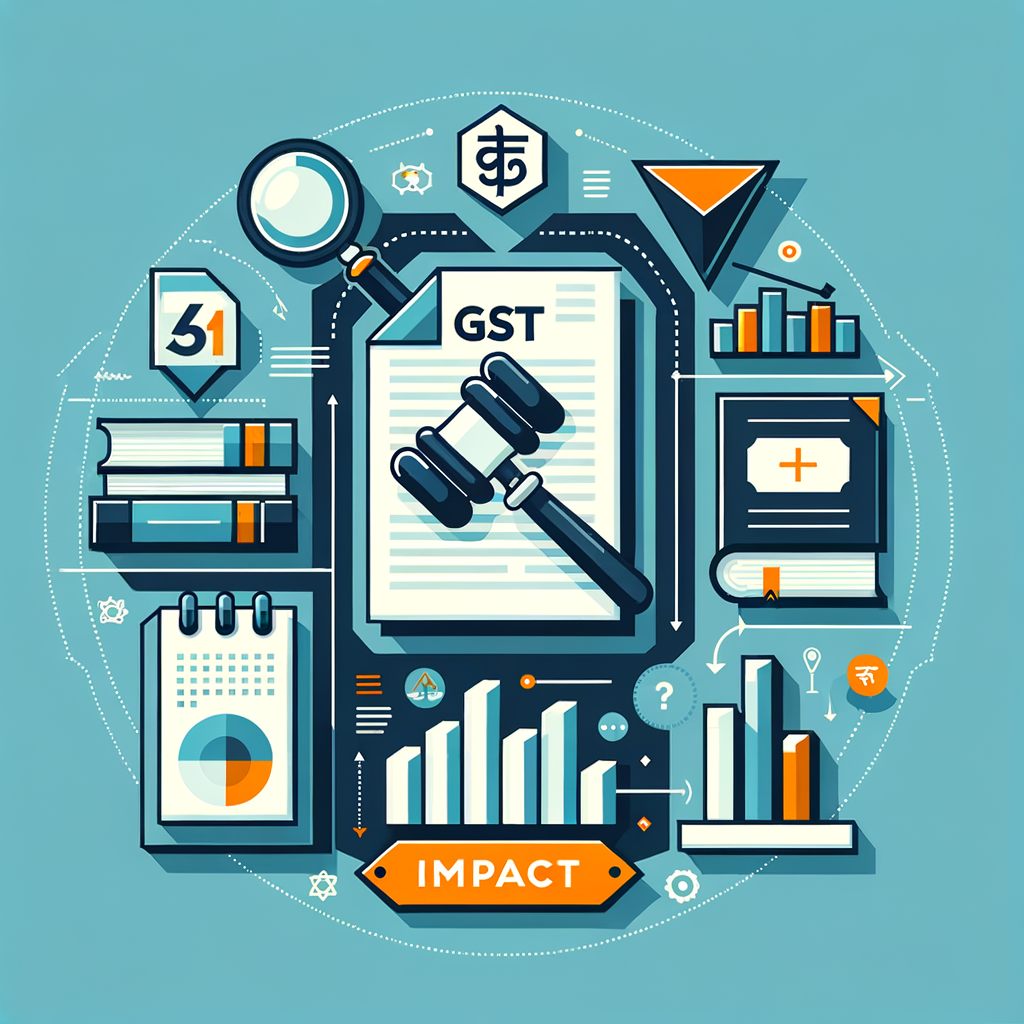GST Legal Interpretations: How Case Laws Affect Return Filings
Are you confident your GST returns are 100% compliant? The rules you followed last year might have already changed. Many business owners believe that GST compliance is just about following the Act, but that’s only half the story. The framework is constantly evolving, shaped by rulings from various judicial bodies. This article breaks down how case laws affect GST returns, providing crucial clarity on complex legal interpretations of GST in India and helping your business stay on the right side of the law. We will explore key rulings and their practical, day-to-day impact on your filing process, ensuring you can navigate the complexities with confidence.
Understanding GST Case Laws and Why They Matter for Your Business
To maintain compliance, it’s essential to first grasp what case laws are and the significant power they hold over your business’s financial health. They aren’t just theoretical legal discussions; they have tangible consequences for your tax calculations, liabilities, and overall strategy.
What is a “Case Law” in the GST Context?
In simple terms, a case law is a judgment or a ruling delivered by a judicial authority (like a court or a tribunal) that interprets a specific provision of the GST law. This ruling then acts as a precedent, guiding how the law should be applied in similar future situations.
There are different levels of these judicial interpretations:
- Advance Rulings (AAR/AAAR): The Authority for Advance Rulings (AAR) and its appellate body (AAAR) are set up to provide clarity on specific GST provisions for a particular applicant *before* a transaction happens. For instance, a company planning to launch a new product can approach the AAR to get a definitive ruling on its HSN code and applicable tax rate. Important Note: An AAR ruling is only binding on the applicant and the jurisdictional tax officer. However, it often signals the tax department’s stance on an issue.
- High Court & Supreme Court Judgments: When a dispute reaches a High Court or the Supreme Court, their judgment becomes the law of the land (within the state for a High Court, and nationwide for the Supreme Court). These rulings are binding on all taxpayers and tax authorities. They can uphold, modify, or even strike down parts of the GST Act or rules, creating a major shift in compliance requirements for everyone.
| Type of Ruling | Who it Applies To | Impact Level |
|---|---|---|
| Advance Ruling (AAR/AAAR) | Only the specific applicant and their tax officer. | Limited, but has persuasive value. |
| High Court Judgment | All taxpayers within that state’s jurisdiction. | High, binding at the state level. |
| Supreme Court Judgment | All taxpayers across India. | Highest, binding nationwide. |
The Real-World Impact on Your Business
These rulings are critical because they fill in the gaps and clarify ambiguities within the dense text of the GST Act. What might seem like a straightforward rule can have multiple interpretations, and a court judgment provides the final, authoritative answer.
Ignoring these legal interpretations of GST in India can expose your business to significant risks. This is a common source of GST compliance issues in India. The potential consequences are severe and can cripple a small business:
- Incorrect Tax Payments: Paying tax at a lower rate than what a court has deemed correct can lead to a demand for the differential amount, plus hefty interest and penalties.
- Wrongful ITC Claims: Claiming Input Tax Credit on an expense that a court has ruled as ineligible can result in the reversal of that credit along with interest.
- Notices and Audits: A mismatch between your interpretation of the law and the judiciary’s can trigger scrutiny from the tax department, leading to time-consuming audits and litigation.
- Heavy Penalties: Non-compliance discovered during an audit can attract penalties that can be as high as the tax amount itself.
Key Areas Where Case Laws Directly Affect GST Returns
Legal theory becomes practical reality when it’s time to file your monthly or quarterly GST returns. Let’s look at the three most common areas where court judgments have a direct and immediate impact on the numbers you report.
Input Tax Credit (ITC) Eligibility and Reversals
Input Tax Credit (ITC) is the backbone of the GST system, but it’s also one of the most litigated areas. The law lays down conditions for claiming ITC, but many grey areas exist, especially concerning business expenses. Common disputes arise over ITC on employee perks (like insurance or transport), marketing and sales promotion expenses, or inputs used for the construction of commercial property.
- Case Law Example: A landmark example is the ruling by the Orissa High Court in the case of Safari Retreats Pvt. Ltd. The court ruled that ITC is available on goods and services used for the construction of a shopping mall that is intended to be rented out. This was a significant decision because the law generally blocks ITC on construction-related expenses for immovable property. This ruling provided a major relief for businesses in the real estate sector.
- Actionable Advice: This is a primary area where case laws impact on GST filings. A ruling like the *Safari Retreats* case directly changes the amount of eligible ITC you can claim in Table 4 of your GSTR-3B return. If you were previously not claiming such ITC, this judgment gives you a legal basis to do so, reducing your cash tax liability. Conversely, a negative ruling could force you to reverse previously claimed ITC.
Classification of Goods & Services (HSN/SAC Codes)
The rate of GST you charge depends on the classification of your product or service under the Harmonized System of Nomenclature (HSN) for goods or the Service Accounting Code (SAC) for services. Incorrect classification leads directly to charging the wrong tax rate. Ambiguity is common for innovative products, software, or services that are bundled together.
- Case Law Example: Consider a simple, hypothetical case involving a company selling a branded “health mix” powder made from roasted cereals and nuts. Is it a basic cereal flour (taxed at 5%) or a processed food product (taxed at 18%)? An AAR or court might rule that the extensive processing and branding make it a processed food, subject to the higher 18% tax rate.
- Actionable Advice: Such a ruling has an immediate effect on your operations and filings. You must update the HSN code and tax rate on all your sales invoices. This, in turn, must be accurately reported in the taxable outward supplies section of your GSTR-1 return. Reporting under the wrong HSN can lead to a tax shortfall and attract departmental scrutiny. This is one of the classic GST return filing case studies that businesses face.
Place of Supply and its Impact on Tax Type (IGST vs. CGST/SGST)
Determining the correct “place of supply” is critical because it decides which tax you should charge: IGST (for inter-state supplies) or CGST + SGST (for intra-state supplies). This is especially complex for service providers, e-commerce platforms, and intermediaries, where the location of the supplier and recipient can be ambiguous.
- Case Law Example: Imagine an online education platform based in Mumbai provides live-streamed coaching to a student in Delhi. The platform might be unsure whether the place of supply is Mumbai (location of supplier) or Delhi (location of recipient). A court ruling could clarify that for such B2C online services, the place of supply is the location of the recipient.
- Actionable Advice: This clarification directly impacts your GSTR-1 filing. In the example above, the Mumbai-based platform must charge IGST on its invoice to the Delhi student, not CGST + SGST. Charging the wrong tax type is a major compliance blunder. While you might have paid the right *amount* of tax, you’ve paid it to the wrong government (Central vs. State). This can lead to complex refund procedures and a demand to pay the correct tax again, causing significant working capital blockage and major GST compliance issues in India.
How to Stay Updated and Ensure Compliant GST Filings
Given the dynamic nature of GST law, staying passive is not an option. You must be proactive in tracking legal developments to protect your business. Here are three practical steps you can take.
Follow Official Government Portals
The government itself is the primary source of information. The Central Board of Indirect Taxes and Customs (CBIC) regularly issues circulars and notifications to clarify legal provisions. While not the same as a court ruling, they provide the department’s official interpretation.
- Recommendation: Bookmark and regularly visit the official CBIC website and the GST Portal for the latest updates.
Subscribe to Reputable Tax & Financial Newsletters
Let’s be honest, reading raw court judgments and government circulars can be dry and confusing. Specialized publications and expert firms do the heavy lifting by analyzing these documents and breaking them down into simple, actionable insights.
- Internal CTA: For instance, TaxRobo’s newsletter breaks down key legal interpretations of GST in India into easy-to-understand summaries specifically for business owners. It cuts through the jargon to tell you what’s changed and what you need to do.
Consult with a GST Professional
This is, by far, the safest and most effective way to ensure compliance. Interpreting legal language is a specialized skill. A qualified CA or tax consultant can assess how a new judgment specifically impacts *your* business operations and return filings. They can help you make necessary changes before they become problems.
- Internal CTA: Don’t risk non-compliance. TaxRobo’s team of GST experts constantly monitors legal developments to ensure your filings are always accurate and optimized. To truly understand how case laws affect GST returns for your specific business, expert guidance is invaluable. Contact Us for a GST Health Check!
Conclusion: Navigating the Evolving GST Landscape
In conclusion, GST compliance is not a one-time setup; it is a continuous journey of learning and adaptation. Case laws are a powerful force that constantly reshapes this landscape. Understanding their impact on critical areas like Input Tax Credit, HSN classification, and Place of Supply is no longer optional—it’s essential for survival and growth.
Staying ignorant of how case laws affect GST returns is a risk that modern businesses simply cannot afford to take. The difference between a proactive, informed business and a reactive one is often the difference between thriving and facing crippling liabilities. Proactive compliance is your best defense against future notices, penalties, and litigation.
Final CTA: Protect your business from notices and penalties. Let TaxRobo manage your GST compliance, so you can focus on what you do best—growing your business. Schedule a Free Consultation Today!
Frequently Asked Questions (FAQs)
1. Do rulings from a High Court in one state apply to my business in another state?
A ruling from a High Court is legally binding only within the territorial jurisdiction of that state. However, it holds significant “persuasive value” in other states. This means a court in another state will likely consider the reasoning of that judgment when deciding a similar case. A verdict from the Supreme Court, however, is the supreme law of the land and is binding on everyone across all states in India.
2. What is the difference between a circular and a case law?
A circular is a clarification or instruction issued by the tax department (CBIC) to its own officers to ensure uniform application of the law. It is not legally binding on taxpayers or the courts. A case law, on the other hand, is a binding interpretation of the law delivered by a judicial body (like a High Court or Supreme Court). In any conflict, a case law holds higher legal authority than a circular.
3. Where can I find summaries of important GST return filing case studies?
Reputable tax news websites, legal portals, and the official websites of professional bodies like the ICAI are good sources. Additionally, the blogs of professional services firms, like the TaxRobo Blog, are excellent resources as they provide simplified summaries and practical implications of important GST return filing case studies tailored for business owners.
4. I made a filing error based on an old interpretation. Can I correct it?
Yes, in most cases, you can correct an error. If the due date for amending the return for that period has not passed, you can make changes in a subsequent GSTR-1. For tax payment shortfalls, the best approach is to voluntarily pay the differential tax along with interest using Form GST DRC-03. This shows proactive compliance and can help minimize or avoid penalties. Given the complexities, it is highly advisable to consult a tax professional to determine the best course of action.




This article breaks down the complexity of GST case laws really well. It’s surprising how such a dynamic legal landscape can affect routine processes like GST filing. What’s the most common misconception businesses have about GST returns based on your experience?
Dear Wan AI,
Thank you for taking the time to read the post and for your comment. I am glad you found it valuable.
It reinforces the simple but powerful idea that financial clarity isn’t about mastering everything at once, but about taking consistent, informed steps, one at a time. That steady effort is what truly builds a secure financial future.
Warm regards,
Maniraj Anantham